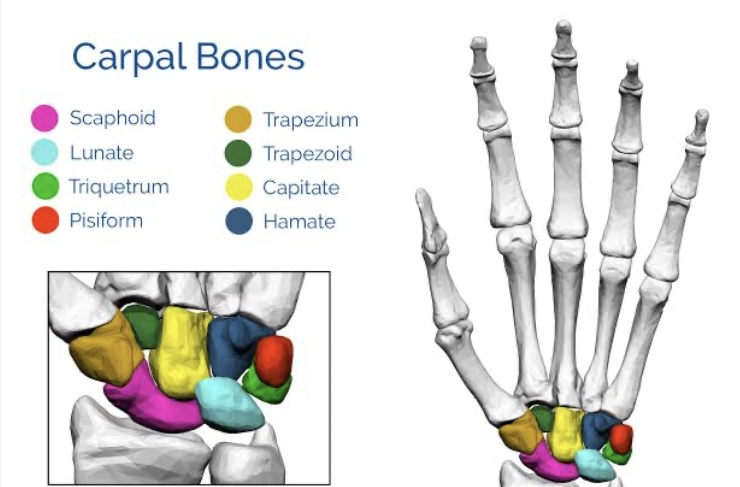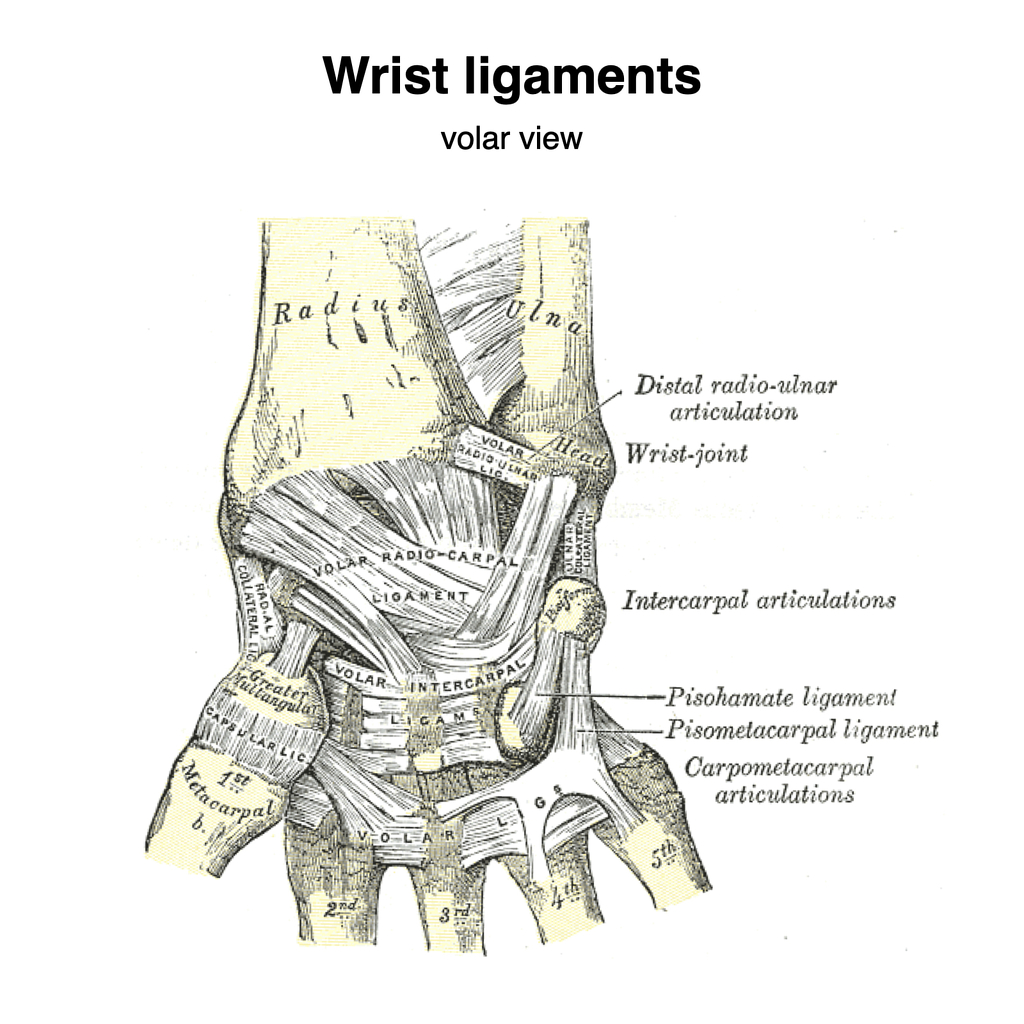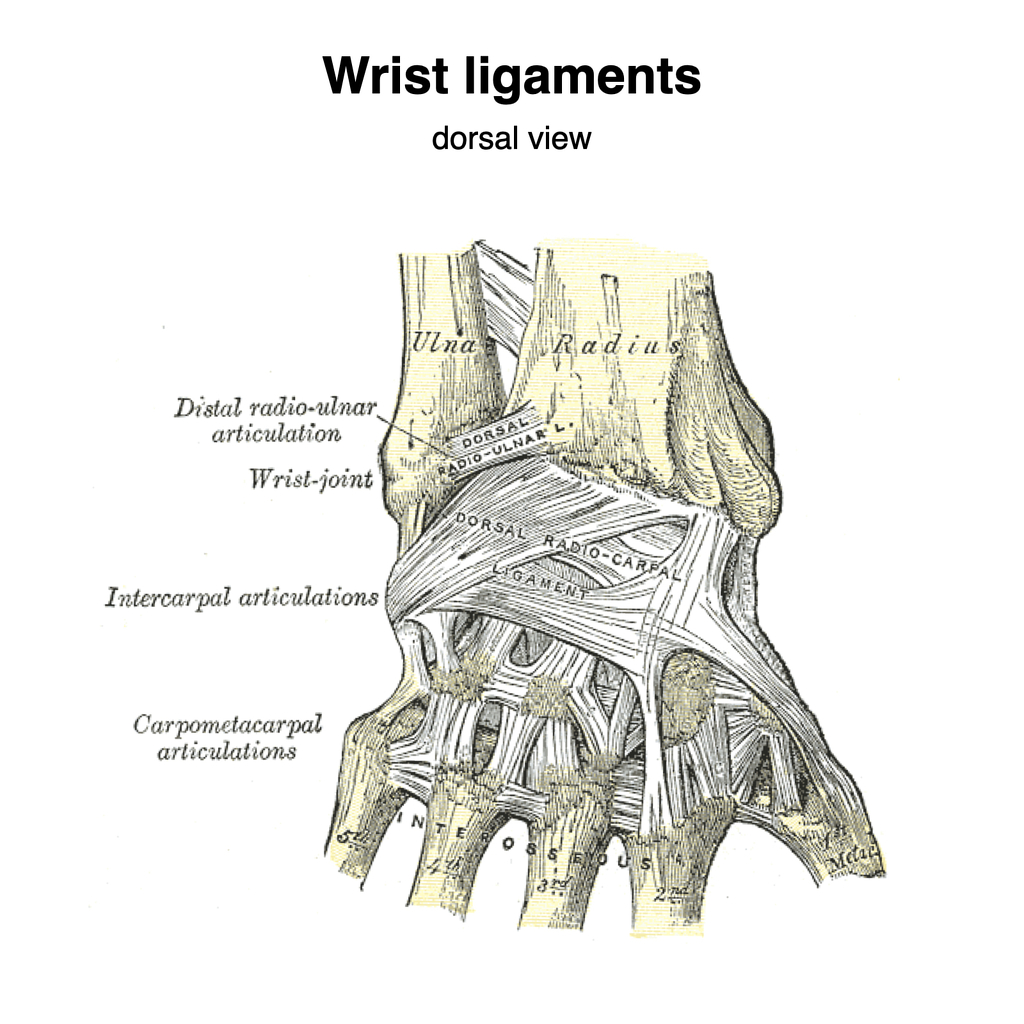Our wrist joint is a very complex with at least eight carpal bones that all move individually and together to allow us the freedom of movement we have.

Our wrist is the same, pivoting around in many planes to allow our hand to position in place for grasp and function.
Think about some examples of this every day. If you’re a tradie or mechanic, you will often be fixing things, pivoting the hand into place using your wrist, under a car bonnet or other structure where you can’t even see it. Placing your hand behind your back to dry yourself and even your toilet hygiene (oooh gross!) requires this pivoting action of the wrist if you think about it.
To go further, modern science is now really getting a grasp over the wrist joint as an extremely highly tuned “sensing joint.” How does this work?
Well, embedded in the ligaments in all our body are nerve receptors called “Proprioceptors.” They feedback information directly to the brain, telling us about stretch, movement and joint position. The more proprioceptors we have, the finer control and awareness we have over that joint.
Now take another look at the pictures of the wrist below, and see how many ligaments there are, both on the front (volar side) and back (dorsal side) of our wrist. It looks like a maze! It makes sense now that the wrist would be rich in Proprioceptors.


A further example of this would be carrying a coffee cup or plate over to your table. As the weight on the plate or in the cup shifts, the proprioceptors of the wrist are automatically feeding back to the brain, and your muscles of your wrist and hand are making minute adjustments so you don’t spill anything. Think about that next time you’re waiting for your latte at the local brew house!
For most of us we can do these daily tasks automatically without even watching, or even while we are distracted by other things such as when multi-tasking or surrounded by noise such as our children distracting us! All thanks to our amazing wrist and Proprioceptors.
A lady named Elisabeth Hagert, a doctor and academic in Sweden has published on this topic and really allowed Proprioception to be on the round table for all discussions with Hand Therapists and Hand Surgeons around the globe. Take a look at the at the Journal of Hand Therapy article Wrist proprioception—An update on scientific insights and clinical implications in rehabilitation of the wrist, still in press to be published (2023) updating us all with more science.
Well, where does this leave us? Well let’s say you’ve been diagnosed or diagnosed yourself with a “wrist sprain” for a fall, work or other sport. Or you may have fractured your wrist some months back and still be struggling. You may even be older and have some Osteoarthritis (OA) of the wrist effecting your function.
In all of these cases, there is no doubt that your wrist joint Proprioceptors will have reduced function. You may or may not even be aware of it. A simple test of your Joint Position Sense (JPS) may tell you. Close your eyes and position your injured wrist actively (using your own muscles) in a certain way. It may be flexed, extended, deviated or rotated as we said above. Then, try to copy that position exactly using your uninjured wrist. Open your eyes and check. You may be surprised to see a difference there. Repeat in different positions and keep checking.
You will be all pleased to know that from a Hand Therapy and rehabilitation point of view, we now have so many tools up our sleeve to help these wrist problems. Elisabeth Hagert in her article proposes a Four Stage multi-modal Rehab model that we certainly draw on here at Sandhurst Specialist Hand Clinic. Building proprioceptive awareness and developing both conscious and reflex neuromuscular control are the keys.
If you’ve been back to the gym and tried to “strengthen” your wrist using dumbbells or weights, this will NOT necessarily help. This process is more about developing finer awareness and muscle control of key targeted muscles and movements.
If you feel you have a deficit in JPS after wrist injury or OA, or you just feel your wrist is painful and doesn’t work as well as you need, the team here at Sandhurst Specialist Hand Clinic can help.
Proprioceptive wrist rehabilitation is one of our expert areas of rehabilitation here. In fact, we really love working with people with wrist pain and loss of function!
If you’re from Bendigo or anywhere in the surrounds like Echuca, Swan Hill, or Castlemaine just to name a few, book your full assessment next time you’re in town!
If your motion sensor and pivoting head needs a real tune up, please enquire now. Our team are confident we can improve your function.
